Tiny Sensors, Infinite Skies: How the Imaging Technology Lab at University of Arizona Helped Build the World’s Largest Eye on the Universe
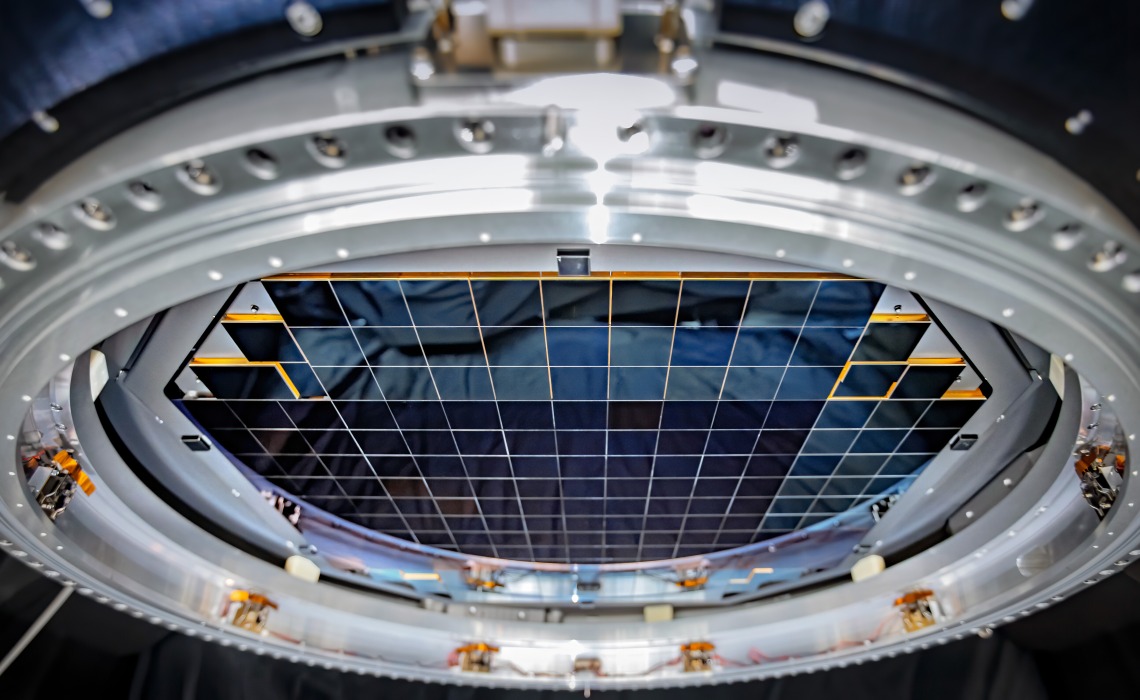
University of Arizona’s Imaging Technology Lab produced the sensors for the focal plane for the Legacy Survey of Space and Time (LSST) camera: the largest digital camera ever built.
Jacqueline Orrell (SLAC)
Last week, a new eye opened on the universe. Perched high in the Chilean Andes, the Vera C. Rubin Observatory captured its first images with the Legacy Survey of Space and Time (LSST) camera: the largest digital camera ever built. The moment marked more than just a milestone in astronomy; it marked the beginning of a 10-year cosmic time-lapse that will capture the changing night sky with unprecedented depth and detail.
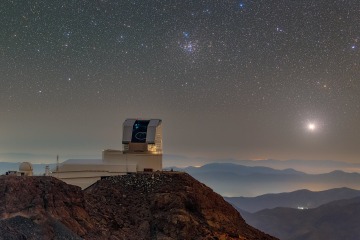
Vera C. Rubin Observatory is seen with its dome open during First Look observation activities in April 2025. Messier 41, the Little Beehive Cluster, can be seen over the telescope in this telelens photo.
RubinObs/NOIRLab/SLAC/NSF/DOE/AURA/P. Horálek (Institute of Physics in Opava)
Deep inside that camera, behind the mirrors and lenses, beneath the cryostats and cooling systems, are sensors designed and built by a small team of engineers and scientists at the University of Arizona’s Imaging Technology Lab (ITL). These thumbnail-sized detectors, just 4 centimeters square, are tiny engines of discovery. Though they’re no bigger than a sticky note, together they allow astronomers to see farther, faster, and more dynamically than ever before.
ITL manufactured and delivered over 100 science-grade sensors to the Rubin Observatory, including nearly half of the LSST camera’s imaging array. The camera’s 189 science sensors, arranged into a tight mosaic across a focal plane the size of an extra-large pizza, are supplemented by 12 additional ITL sensors which are dedicated to guiding the telescope and maintaining optimal image quality across its wide field of view.
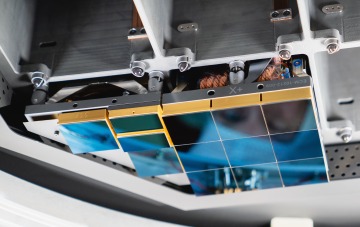
Pictured: a corner of the LSST.
Farrin Abbott (SLAC)
These sensors are no ordinary pixels. Each one is a precisely engineered hybrid: a backside-thinned silicon photosensitive layer bonded onto an aluminum-nitride ceramic, which contains the electrical traces for reading out the sensor swiftly. They’re mounted into modular units known as rafts—nine sensors per raft, 21 rafts in total—forming a 3.2-gigapixel array capable of scanning the entire southern sky every few nights.
For comparison, the sensor in a high-end DSLR camera might be around 35mm wide and contain about 50 million pixels. The LSST camera has 3.2 billion pixels: enough resolution to spot a golf ball from 15 miles away. And where consumer time-lapse photography might condense a sunrise into a 30-second video, Rubin’s LSST will produce a decade-long time-lapse of the universe itself.
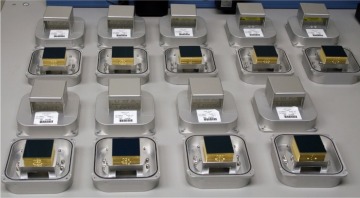
Individual sensors were packaged up at ITL for shipment to Chile.
The sensors ITL provided also played a crucial early role: they made up the entire Commissioning Camera, which was used to test and calibrate the telescope before the final science camera was installed.
“Over the course of this project, ITL designed, developed, and produced hundreds of charge-coupled devices (CCDs) for the LSST camera,” said Michael Lesser, former ITL Director. “This includes prototypes, test sensors for process development, and the actual delivered science and guiding imagers. The work took over a decade by up to a dozen dedicated laboratory staff members. At times there were three cryogenic test cameras running per day to meet the demanding production schedule. The ITL team is very gratified to see the magnificent on-sky images from the finished camera and operating observatory.”
This long-spanning behind-the-scenes phase ensured the Rubin Observatory would be ready for the ambitious task ahead: surveying the sky for dark matter, dark energy, near-Earth asteroids, and the structure of the cosmos itself.
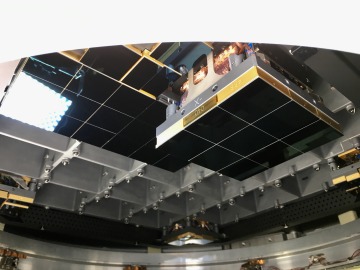
Another view of the corner raft for the LSST. ITL manufactured and delivered over 100 science-grade sensors to the Rubin Observatory, including nearly half of the LSST camera’s imaging array.
Peter Doherty (Harvard LPPC)
"The ITL team is extremely excited to see the realization of their efforts," said Dr. Jarron Leisenring, ITL Director. "The gorgeous new images acquired with the Rubin Observatory's LSST Camera are a testament to the skill and thoroughness of our engineers and technicians who manually assembled the hundreds of sensors ITL delivered to the project. It was a labor of love, and they should be very proud of their accomplishments."
Now that first light has been achieved, the real work begins. And with it, a small laboratory right here in Tucson will continue watching with pride as its tiny sensors send back vast new visions of the universe.

